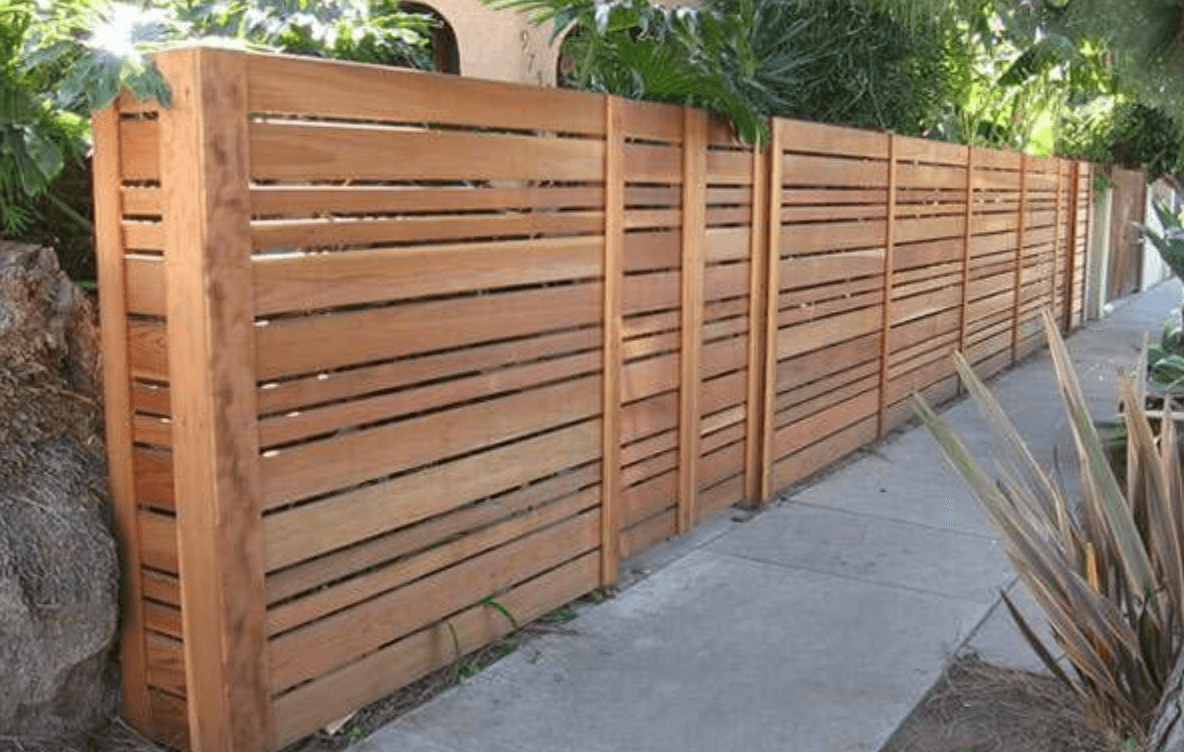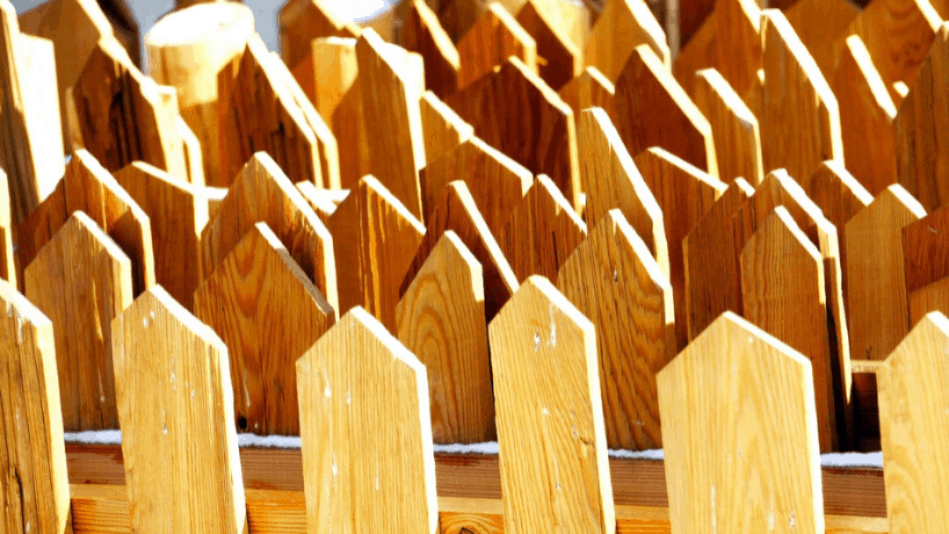All Categories
Featured
Whether you have a wood, plastic, metal, or composite fence, taking actions to secure it from the weather will certainly prolong its life and protect its look. Below are several methods you can secure your fencing from weather-related damage.
![]()
Wooden Fences: Wood is vulnerable to rot, warping, and insect infestations when exposed to moisture. If you select a wood fencing, pick materials like cedar or redwood, which are normally more immune to the components. Additionally, select pressure-treated timber, which has actually been chemically dealt with to stand up to rot and bugs. Plastic Fences: Plastic fences are highly resistant to the elements. They will not rot, warp, or split like timber, and they are immune to insect damage. Vinyl is also UV-resistant, so it does not discolor in the sunlight as rapidly as various other products. Metal Fences: Wrought iron and aluminum fences are sturdy and immune to a lot of weather condition conditions. Nevertheless, metal can rust if subjected to moisture for prolonged periods. If you have a metal fence, guarantee it is powder-coated or galvanized to stop rusting. Composite Fences: Compound fences incorporate wood fibers and plastic, providing the appearance of wood with enhanced toughness. They are resistant to rot, pests, and fading, making them a good selection for areas with extreme weather. 2. Apply Protective Coatings and Sealants. Applying safety coverings to your fencing can protect against dampness and UV damage, considerably extending its life expectancy.
Wood Fences: To secure wood from moisture and UV rays, apply a top quality discolor or sealer. These finishes function as an obstacle, avoiding water from saturating into the wood and creating rot. In addition, they shield versus sunlight damages that can trigger fading and cracking. Make certain to reapply the stain or sealer every few years, depending on the environment and the condition of the fencing. Plastic Fences: Although plastic fencings are very resilient, they can still discolor in time because of UV exposure. You can apply a UV protectant to maintain your vinyl fence appearing like brand-new. Furthermore, routine cleansing with a vinyl-safe cleaner can help protect against staining and staining. Metal Fences: Metal fencings, particularly those made of iron or steel, can rust with time. A rust-resistant primer complied with by a coat of weather-resistant paint will certainly assist secure against deterioration. For added protection, think about powder finishing, which offers a durable, long-lasting finish that resists rust and scratches. 3. Regular Cleaning and Maintenance. Keeping your fence clean and properly maintained is among the most efficient methods to protect against weather-related damages.
Wooden Fences: Dust, debris, and mold and mildew can gather on wood fences over time. Regular cleansing with a mild soap solution or stress washing machine can help avoid the build-up of grime. Make certain to examine the timber for indicators of damages such as rot or fracturing and address concerns quickly. Vinyl Fencings: Plastic fencings are low-maintenance, but they can build up dirt, leaves, and other particles. To clean a vinyl fencing, simply hose pipe it down or clean it with soapy water. For harder discolorations, make use of a soft cloth with a vinyl-safe cleaner. Steel Fencings: Steel fencings can gather dirt, corrosion, and dirt, specifically after a tornado. Tidy the fencing routinely using a non-abrasive towel and moderate soap. Get rid of any corrosion promptly with a wire brush or rust eliminator to stop it from spreading. 4. Mount a Fence Base Guard. For fencings exposed to heavy rain or snow, installing a fence base protector can protect against wetness from passing through the base of your fence messages. This is particularly vital for wood and composite fencings, as water direct exposure at the base of the fence can bring about decomposing or deterioration.
In enhancement to base protectors, take into consideration making use of crushed rock or a moisture-resistant barrier around the base of wood posts. This will enable water to drain away from the base of the articles and decrease the threat of rot.
![]()
Consistently trim back plants and trees that are near the fencing. This will certainly help keep the fencing completely dry, stop undesirable stress on the framework, and guarantee that air flows around the posts.
For metal fences, inspect for corrosion before the winter season and treat any kind of afflicted areas. You can also use a safety layer to stop snow and ice from creating corrosion.
![]()
Verdict. Safeguarding your fence from weather-related damages is important to guaranteeing its durability and effectiveness. By choosing the right materials, using safety coatings, maintaining your fencing clean, and taking aggressive maintenance steps, you can stop a lot of the typical concerns that emerge from exposure to the elements. Whether you have a wood, vinyl, steel, or composite fencing, these steps will certainly help secure your financial investment and keep your fence looking terrific for years to find.

- Choose Weather-Resistant Products. The material of your fence plays a considerable role in its ability to endure numerous climate problems. Choosing a product that fits your environment can assist minimize weather-related damage.
Wooden Fences: Wood is vulnerable to rot, warping, and insect infestations when exposed to moisture. If you select a wood fencing, pick materials like cedar or redwood, which are normally more immune to the components. Additionally, select pressure-treated timber, which has actually been chemically dealt with to stand up to rot and bugs. Plastic Fences: Plastic fences are highly resistant to the elements. They will not rot, warp, or split like timber, and they are immune to insect damage. Vinyl is also UV-resistant, so it does not discolor in the sunlight as rapidly as various other products. Metal Fences: Wrought iron and aluminum fences are sturdy and immune to a lot of weather condition conditions. Nevertheless, metal can rust if subjected to moisture for prolonged periods. If you have a metal fence, guarantee it is powder-coated or galvanized to stop rusting. Composite Fences: Compound fences incorporate wood fibers and plastic, providing the appearance of wood with enhanced toughness. They are resistant to rot, pests, and fading, making them a good selection for areas with extreme weather. 2. Apply Protective Coatings and Sealants. Applying safety coverings to your fencing can protect against dampness and UV damage, considerably extending its life expectancy.
Wood Fences: To secure wood from moisture and UV rays, apply a top quality discolor or sealer. These finishes function as an obstacle, avoiding water from saturating into the wood and creating rot. In addition, they shield versus sunlight damages that can trigger fading and cracking. Make certain to reapply the stain or sealer every few years, depending on the environment and the condition of the fencing. Plastic Fences: Although plastic fencings are very resilient, they can still discolor in time because of UV exposure. You can apply a UV protectant to maintain your vinyl fence appearing like brand-new. Furthermore, routine cleansing with a vinyl-safe cleaner can help protect against staining and staining. Metal Fences: Metal fencings, particularly those made of iron or steel, can rust with time. A rust-resistant primer complied with by a coat of weather-resistant paint will certainly assist secure against deterioration. For added protection, think about powder finishing, which offers a durable, long-lasting finish that resists rust and scratches. 3. Regular Cleaning and Maintenance. Keeping your fence clean and properly maintained is among the most efficient methods to protect against weather-related damages.
Wooden Fences: Dust, debris, and mold and mildew can gather on wood fences over time. Regular cleansing with a mild soap solution or stress washing machine can help avoid the build-up of grime. Make certain to examine the timber for indicators of damages such as rot or fracturing and address concerns quickly. Vinyl Fencings: Plastic fencings are low-maintenance, but they can build up dirt, leaves, and other particles. To clean a vinyl fencing, simply hose pipe it down or clean it with soapy water. For harder discolorations, make use of a soft cloth with a vinyl-safe cleaner. Steel Fencings: Steel fencings can gather dirt, corrosion, and dirt, specifically after a tornado. Tidy the fencing routinely using a non-abrasive towel and moderate soap. Get rid of any corrosion promptly with a wire brush or rust eliminator to stop it from spreading. 4. Mount a Fence Base Guard. For fencings exposed to heavy rain or snow, installing a fence base protector can protect against wetness from passing through the base of your fence messages. This is particularly vital for wood and composite fencings, as water direct exposure at the base of the fence can bring about decomposing or deterioration.
In enhancement to base protectors, take into consideration making use of crushed rock or a moisture-resistant barrier around the base of wood posts. This will enable water to drain away from the base of the articles and decrease the threat of rot.

- Trim Greenery Around Your Fencing. Trees, hedges, and plants growing also close to your fence can trigger considerable weather-related damage. Overgrown plant life can trap moisture versus the fencing, promoting rot and mold and mildew growth. In addition, tree origins can push versus fencing messages, triggering them to split or move.
Consistently trim back plants and trees that are near the fencing. This will certainly help keep the fencing completely dry, stop undesirable stress on the framework, and guarantee that air flows around the posts.
- Prepare Your Fence for Wintertime. In regions with chilly winter seasons, freezing temperature levels and ice can be specifically harming to wooden fences. Water that enters the timber can freeze, triggering cracks and divides. To stop this, make sure that your wooden fencing articles are properly secured and elevated in the air to avoid water from collecting at the base.
For metal fences, inspect for corrosion before the winter season and treat any kind of afflicted areas. You can also use a safety layer to stop snow and ice from creating corrosion.

- Post-Storm Upkeep. After a heavy storm, evaluate your fencing for any kind of indications of damages, such as loose posts, curved panels, or debris lodged in between slats. Even minor damage must be repaired swiftly to stop more wear and tear. If your fence has been harmed by a storm, enhance weak areas and replace busted sections asap to preserve its architectural stability.
Verdict. Safeguarding your fence from weather-related damages is important to guaranteeing its durability and effectiveness. By choosing the right materials, using safety coatings, maintaining your fencing clean, and taking aggressive maintenance steps, you can stop a lot of the typical concerns that emerge from exposure to the elements. Whether you have a wood, vinyl, steel, or composite fencing, these steps will certainly help secure your financial investment and keep your fence looking terrific for years to find.
Latest Posts
Chill, Sip, and Enjoy at Shake Street
Published Apr 21, 25
1 min read
Protect Your Future with WyHy's Unique Certificate Options
Published Apr 21, 25
1 min read
Why Pick WyHy Quick Trac Interest-bearing Accounts
Published Apr 21, 25
1 min read